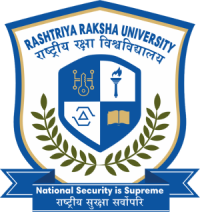6-Day Online Course on "Strategic Importance of Tibet on India's Security" - Batch-1
.jpg)
Description
Concept Note
Tibet occupies a pivotal place in India’s strategic calculus, not merely as a subject of academic inquiry but as a living geopolitical reality. Stretching across about 3,488 kilometers of shared border, Tibet’s proximity to India places it at the heart of Himalayan geopolitics. Historically, Tibet served as a buffer zone between India and China, insulating the subcontinent from direct confrontation. However, its integration into the People’s Republic of China in the mid-20th century dismantled this buffer, transforming Tibet into a frontline of strategic tension.
Today, Tibet is central to understanding India’s northern frontier. The region has witnessed rapid militarization, demographic shifts, and infrastructural expansion under Chinese administration. These developments are not confined to internal Chinese policy—they have direct implications for India’s border security, regional stability, and strategic autonomy. Monitoring changes in Tibet’s terrain, population, and governance is essential for anticipating unrest, interpreting Chinese intentions, and preparing for contingencies along the Line of Actual Control.
Beyond the military dimension, Tibet’s cultural and religious identity plays a subtle yet powerful role in shaping regional dynamics. Tibetan Buddhism, with its deep roots in Himalayan societies such as Sikkim, Bhutan, and Arunachal Pradesh, continues to influence local populations and cross-border relationships. China’s efforts to suppress religious expression – including the selection of Dalai Lama’s reincarnation - and reengineer Tibetan identity have ripple effects across the region, making cultural understanding a strategic asset for India. Engaging with Tibetan traditions and institutions enhances India’s ability to build trust, counter disinformation, and assert its moral leadership in the face of authoritarian narratives.
However, trends in Indian discourse raise concerns about how Tibet is being framed. The widespread use of the term “Tibet Autonomous Region” (TAR)- more recently referring Tibet as Xizang, as defined by the Chinese government, risks narrowing the historical and cultural scope of Tibet. This terminology excludes some regions Amdo and Kham, which have long been integral to Tibetan civilization. By adopting the TAR label uncritically, India may inadvertently validate Chinese territorial claims and diminish its own strategic leverage.
Such semantic alignment can shape public perception, policy formulation, and diplomatic engagement. It risks erasing Tibet’s broader historical identity and weakening India’s ties with communities that have deep cultural connections to the Tibetan plateau. A more nuanced and historically accurate understanding of Tibet is essential—not only for intellectual integrity but for safeguarding India’s strategic interests.
Tibet’s influence also extends to India’s internal cohesion. In border states like Arunachal Pradesh and Ladakh, Tibetan cultural heritage is interwoven with local identities. Recognizing and respecting this heritage strengthens India’s integration efforts and counters external attempts to sow discord. Moreover, Tibet’s symbolic power—embodied in its monasteries, rituals, and resistance narratives—can serve as a rallying point for regional solidarity and resilience.
Incorporating Tibet into India’s strategic vision requires more than surveillance and diplomacy—it demands cultural intelligence, historical awareness, and policy innovation. India must invest in building expertise that goes beyond conventional security paradigms, embracing Tibet’s complexity as both a geopolitical challenge and a cultural ally.
Ultimately, Tibet is not just a contested territory—it is a civilizational crossroads that shapes the future of the Himalayas. For India, understanding and engaging with Tibet is not a peripheral concern but a central pillar of national security and regional leadership. As the geopolitical landscape grows more volatile, India’s ability to navigate the Tibetan dimension with clarity, confidence, and cultural sensitivity will determine its strategic success in the Himalayan arc.
About the Program
The certificate program Strategic Importance of Tibet for India’s National Security offers a timely and much-needed deep dive into Tibet’s role in India’s strategic landscape. With a lineup of respected scholars, activists, and policy experts, the program explores Tibet not just as a geopolitical flashpoint, but as a living civilization with deep cultural and spiritual roots.
Participants will engage with themes ranging from reincarnation in Tibetan Buddhism and the region’s civilizational identity, to pressing issues like environmental security, geospatial intelligence, and China’s strategic posture in the Himalayas. Sessions also spotlight Tibetan activism, women’s political representation, and China’s cartographic aggression in Arunachal Pradesh.
Designed for students, researchers, and professionals, this program is a step toward bridging the knowledge gap and fostering informed dialogue on one of the most critical yet overlooked regions in India’s strategic discourse.
What you'll learn
1. Understand Tibet’s Civilizational Identity Examine the religious, cultural, and philosophical foundations of Tibetan society and how they shape its strategic relevance in the Himalayan region.
3. Evaluate China’s Tibet Policy and Strategic Calculus Assess China’s historical and contemporary policies toward Tibet and their implications for India’s foreign policy and national security.
5. Assess Cartographic and Territorial Challenges Understand China’s cartographic aggression and renaming strategies in Arunachal Pradesh, and their impact on India’s territorial integrity and strategic posture.
2. Analyze Geopolitical Dynamics Explore the strategic importance of Tibet in India-China relations, including border security, infrastructure development, and environmental concerns.
4. Investigate Resistance Movements and Political Representation Study the role of Tibetan activism, the Rangzen movement, and the evolving landscape of political representation in Tibetan-inhabited regions.
Requirements
Course Content
Semester with subjects
 No Semester Founds.
No Semester Founds.
Experts
Subject Matter Specialist (Tibetan Language)



Recent Reviews